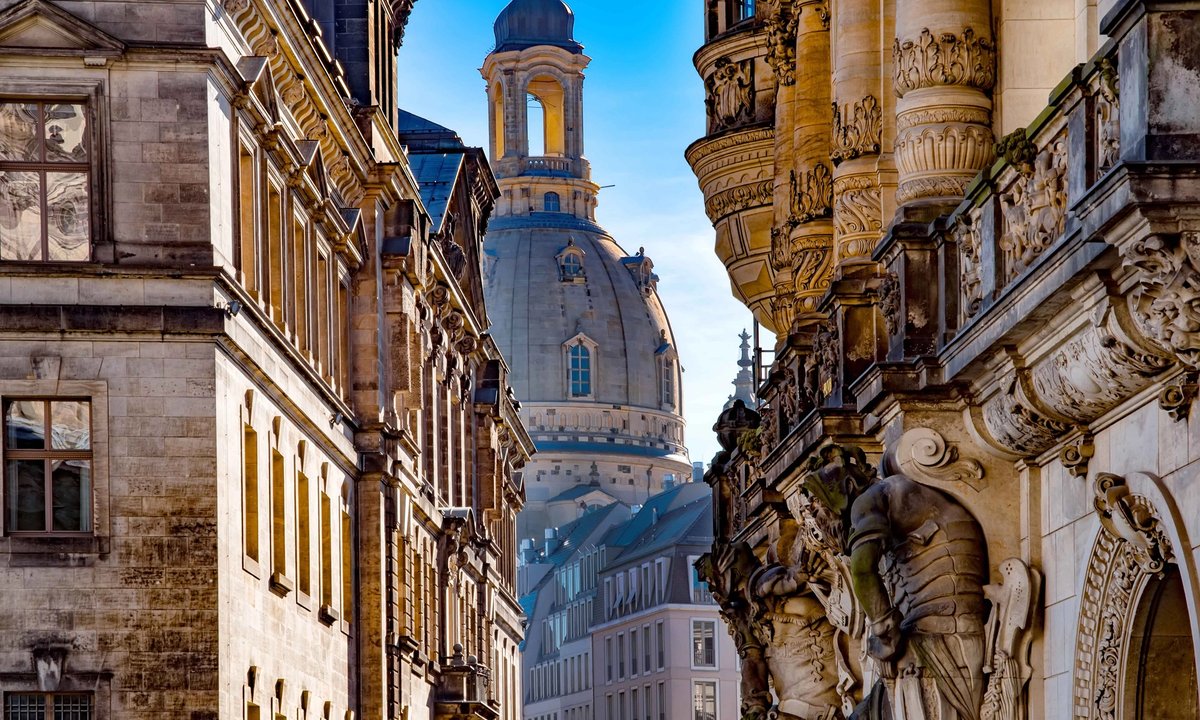Earlier than the Second World Warfare, Dresden was generally thought to be Germany’s most stunning metropolis, marked by Baroque silhouettes and stuffed with cherished collections of the effective and utilized arts. Then got here the Allied air raids of February 1945, and Dresden gained underwent what might be described as a horrific rebrand—changing into Germany’s most decimated metropolis. Many years of rebuilding later, nonetheless, it’s as soon as once more what Germans name a Kunststadt—a metropolis of artwork.
The artwork there’s overwhelmingly concentrated within the Staatliche Kunstsammlungen Dresden (SKD), comprising 15 museums that also largely replicate the tastes and tendencies of Saxony’s Home of Wettin, who reigned from the fifteenth century till 1918. The town’s golden age got here within the 18th century, when the Wettin ruler Augustus the Sturdy served as each the prince-elector in Saxony and the king of Poland, turning his Residenzstadt into one in every of Europe’s most alluring and spendthrift courts. The splurging continued underneath his son, Frederick Augustus II, whose purchases introduced lots of Europe’s most celebrated work to the town.
Today, the core of Dresden’s key collections are all inside strolling distance from each other, concentrated within the Zwinger, August the Sturdy’s Baroque showpiece; the Residenzschloss, the lately rebuilt and re-imagined former royal palace; and the Albertinum, the late-Nineteenth century museum constructing, initially meant to deal with sculpture and now displaying artwork made after 1800.
1. Raphael’s Sistine Madonna (1512/13), Gemäldegalerie Alte Meister, Zwinger (Semperbau)
This Excessive Renaissance masterpiece was initially commissioned by Pope Julius II, then hung in a church in Piacenza, northwest of Parma, earlier than arriving in Dresden in 1754, after Frederick Augustus II paid a fortune for it. The Madonna—one of many artist’s final—has a grandeur harking back to classical antiquity; on the backside, in the meantime, are two placid putti who’ve turn out to be well-known in their very own proper.
The portray, now an anchor work within the mid-Nineteenth-century constructing designed by Gottfried Semper—arguably Europe’s most gifted historicist architect—was one other period’s Mona Lisa. It stays one in every of Raphael’s most recognisable works.
Admission €16 (full worth). Instructions right here
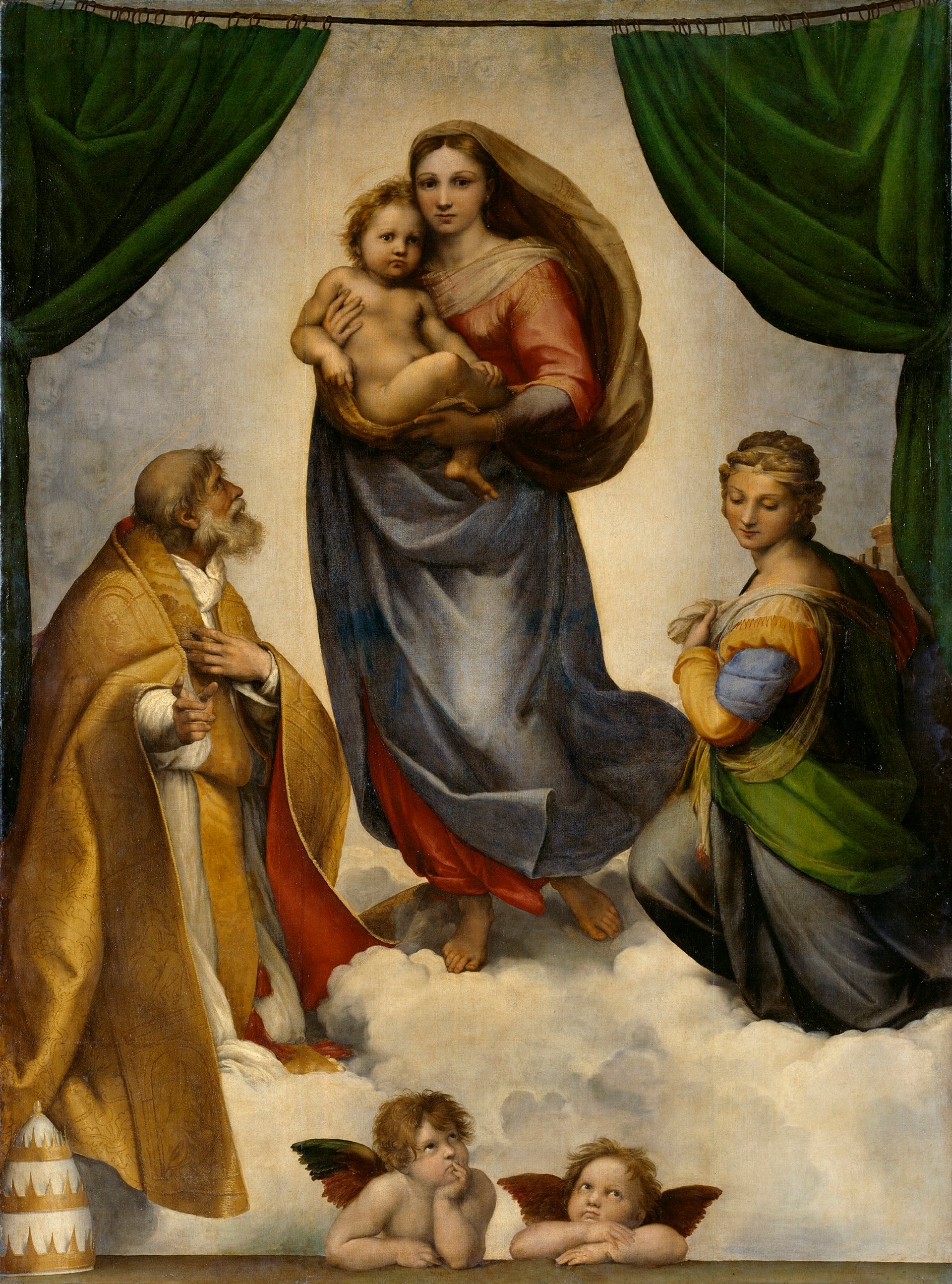
Raphael, Die Sixtinische Madonna (Sistine Madonna) (1512-13)
© Gemäldegalerie Alte Meister, SKD, Foto: Estel/Klut
2. Casper David Friedrich’s The Nice Enclosure (1832), Galerie Neue Meister, Albertinum
Born on the north German coast and educated in Denmark, Casper David Friedrich moved to Dresden in his early 20s, made his title as Germany’s Romantic painter ne plus extremely, then died there, age 65, in 1840, his earlier fame a fading reminiscence. A number of years later, the director of Dresden’s Royal Museums started accumulating for a brand new “Fashionable” division, because it was identified, and by the top of the century, with Friedrich’s status on the rise once more, a number of of his works had been amongst that assortment’s main points of interest.
This late Saxon panorama—each bleak and delightful, with premonitions of the Modernist revolution to come back—was acquired in 1909. Together with the artist’s early and revelatory Tetschen Altar, it’s now the stand-out Friedrich work in his longtime hometown.
Admission €16. Instructions right here
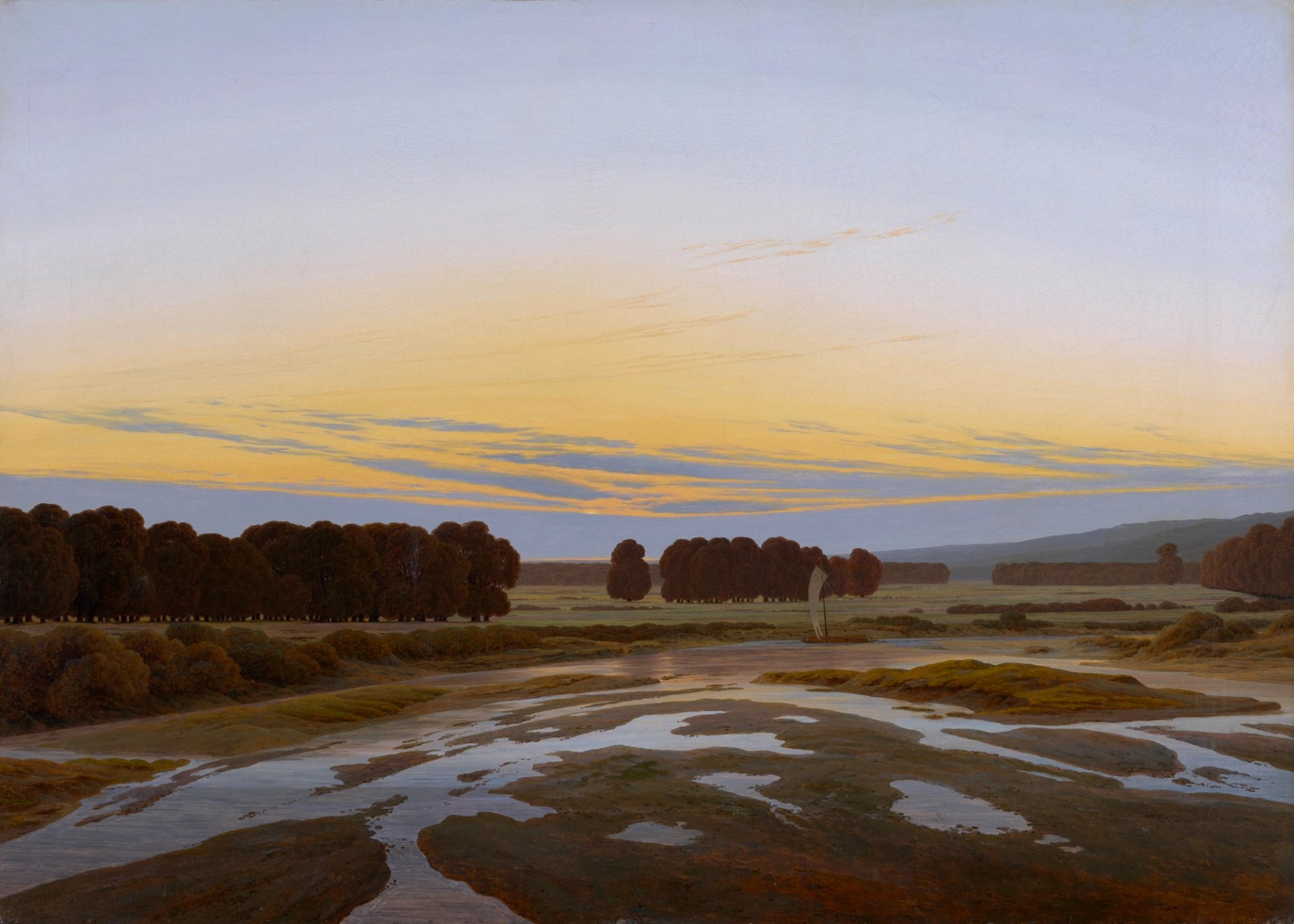
Caspar David Friedrich, Das Große Gehege bei Dresden (The Nice Enclosure) (1831-32)
© Albertinum, Galerie Neue Meister, SKD, Foto: Elke Estel/Hans-Peter Klut
3. Cherry pit with 185 carved heads (simply earlier than 1589), Grünes Gewölbe, Residenzschloss
The richly embellished rooms of Dresden’s Grünes Gewölbe (named for the unique inexperienced detailing) have been displaying Saxon treasures, which date again to the sixteenth century, for the reason that time of Augustus the Sturdy. By turns extravagant, ingenious, and outright bizarre, the priceless objects listed below are amongst Dresden’s—certainly, Germany’s—main points of interest.
This tiny, elaborate and weird cherry pit, with its manifold carvings and enamel-and-pearl ornament, is among the many smallest of the gathering’s fanciful objects, but in addition one of the celebrated. A magnifying glass put in in its vitrine permits you to admire the 4.5-cm work, made by an unnamed craftsman.
Admission €16. Instructions right here
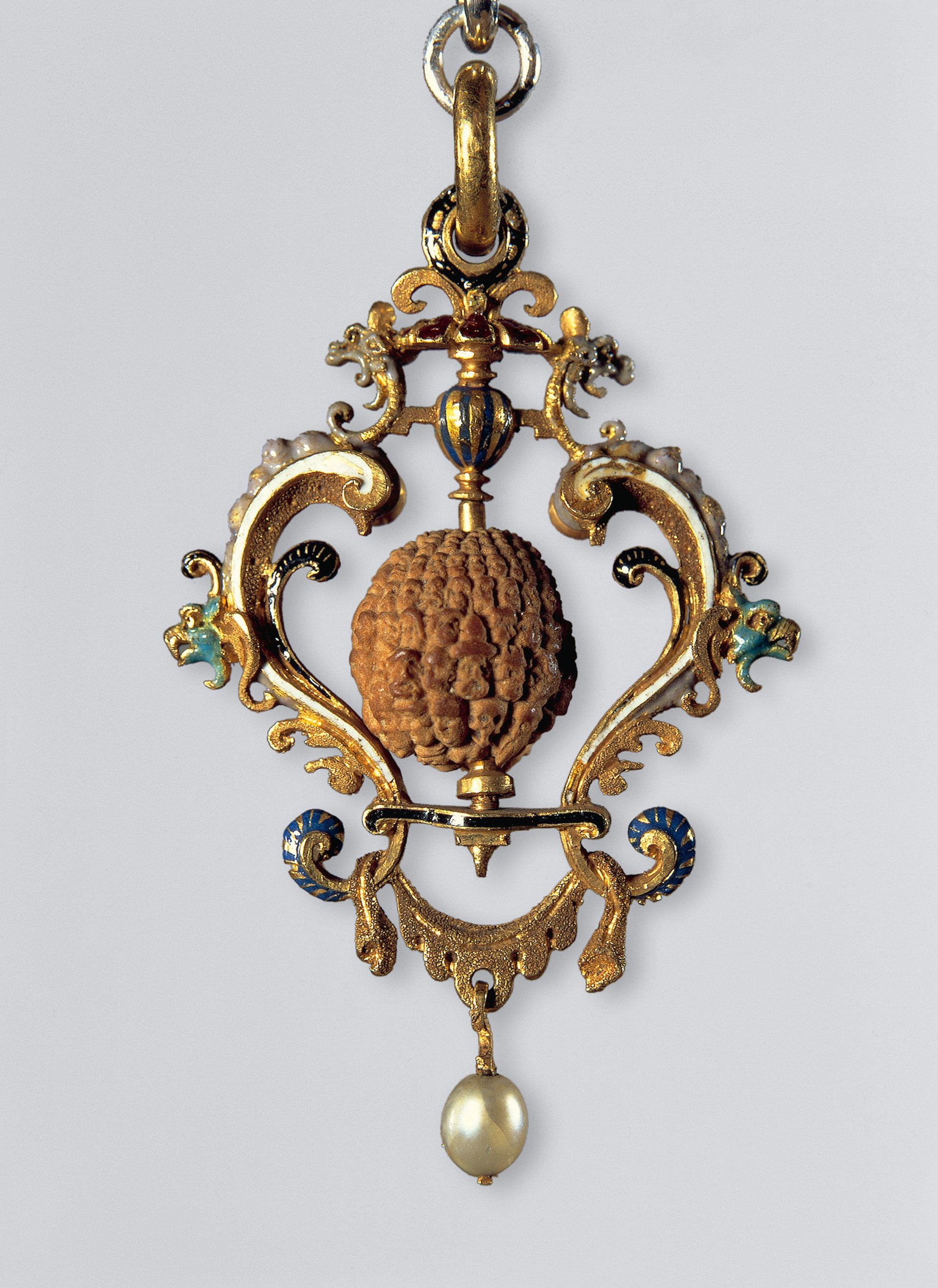
Cherry pit with 185 carved heads (simply earlier than 1589)
© Grünes Gewölbe, SKD, Foto: Jürgen Karpinski
4. Jan van Eyck’s Portrait of an Aged Man (round 1435/40), Kupferstich-Kabinett, Residenzschloss
Dresden’s assortment of prints and drawings options some 500,000 works courting again to the early sixteenth century. Represented are artists starting from Albrecht Dürer and Michelangelo to Georg Baselitz, however perahps its best-known work is what students regard because the lone surviving drawing by Jan van Eyck.
The 21-cm-high drawing is expounded to an oil-on-canvas portrait of an Italian diplomat-cardinal now within the assortment of Vienna’s Kunsthistorisches Museum, however is extra lifelike—and accommodates extra pathos—than that work.
Admission €6. Instructions right here
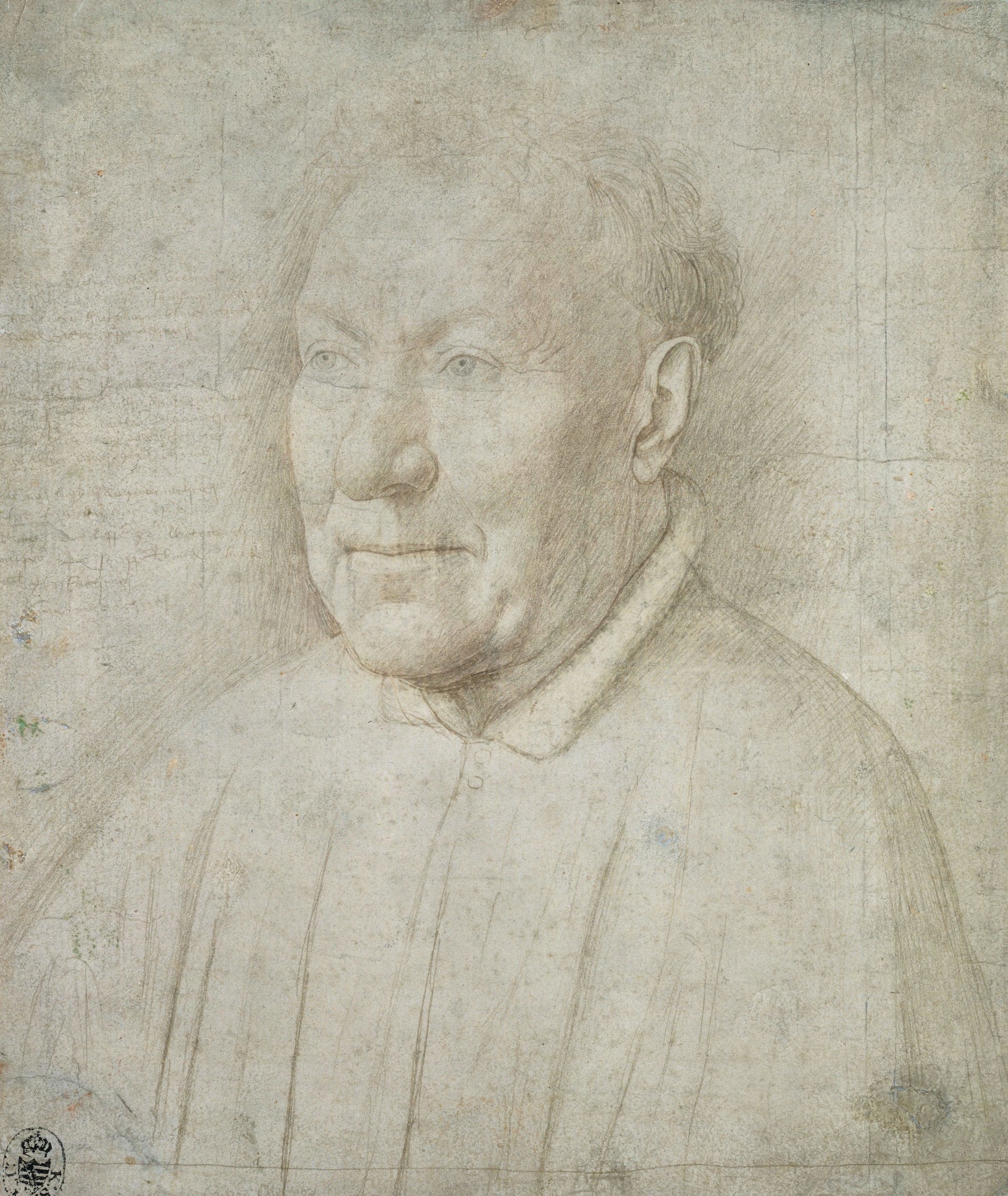
Jan van Eyck, Portrait of an Aged Man (1435-40)
© Kupferstich-Kabinett, SKD. Photograph: Herbert Boswank
5. Otto Dix’s The Warfare (1929-32), Galerie Neue Meister, Albertinum
Although referred to as a Baroque capital, Dresden later grew to become a testing floor for Modernism. The town’s Academy of Superb Arts was arguably Germany’s main artwork faculty within the years surrounding the First World Warfare, serving to to foster each Expressionism and the Weimar period’s New Objectivity. Otto Dix—a local of the Thuringian metropolis of Gera—was each an alumnus and a professor right here, earlier than his scathing depictions of German society had been denounced as “degenerate” by the Nazis.
Dix, a military veteran, created quite a lot of anti-war works, however The Warfare, a triptych with a predella, could also be his strongest. It’s impressed by Germany’s Previous Masters, notably Matthias Grünewald, and blends stunning hyperrealism with nightmarish fantasy.
Admission €14. Instructions right here
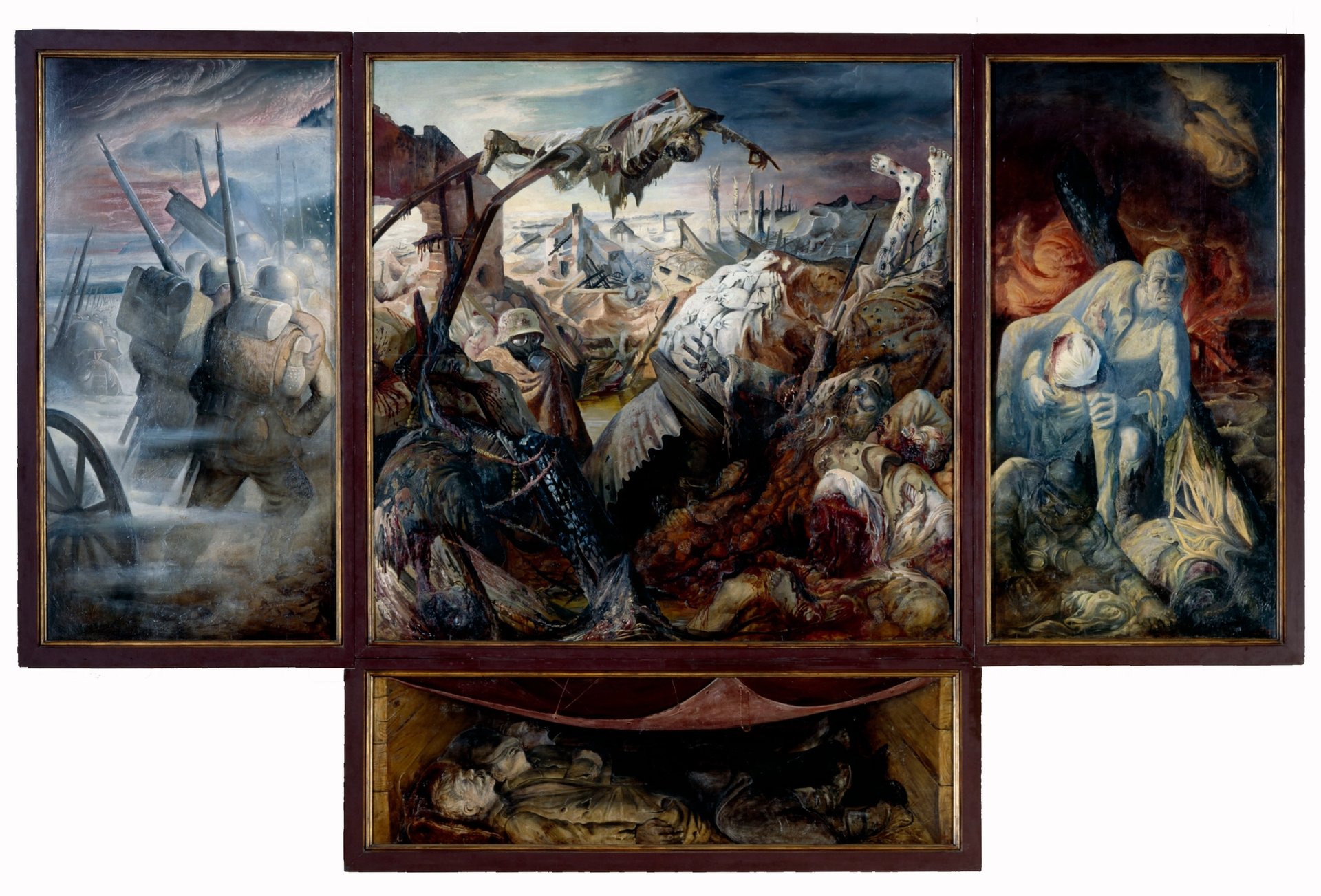
Otto Dix, The Warfare (1929-32)
© Albertinum, Galerie Neue Meister, SKD, Foto: Elke Estel/Hans-Peter Klut / VG Bild-Kunst Bonn, 22025
6. Ceremonial armour (1518/19-1583), Rüstkammer, Residenzschloss
The SKD’s Rüstkammer is nominally an armoury, however the majority of its grandiose items, whereas suggesting precise battle, had been only for present. Its uncommon treasures embody an unlimited Seventeenth-century Ottoman tent, however the museum provides satisfaction of place to this whole set of supremely detailed Swedish armour, made by an Antwerp goldsmith for a person and his horse.
The armour was initially commissioned by a Swedish king after which purchased by a Saxon Elector (who paid a sum that might have purchased him an entire citadel). Its metalwork is embellished with chased floral tendrils, snakes, dolphins, sphinxes and griffins, in addition to the deeds of Hercules. It’s the jewel within the Rüstkammer’s crown.
Admission €16. Instructions right here
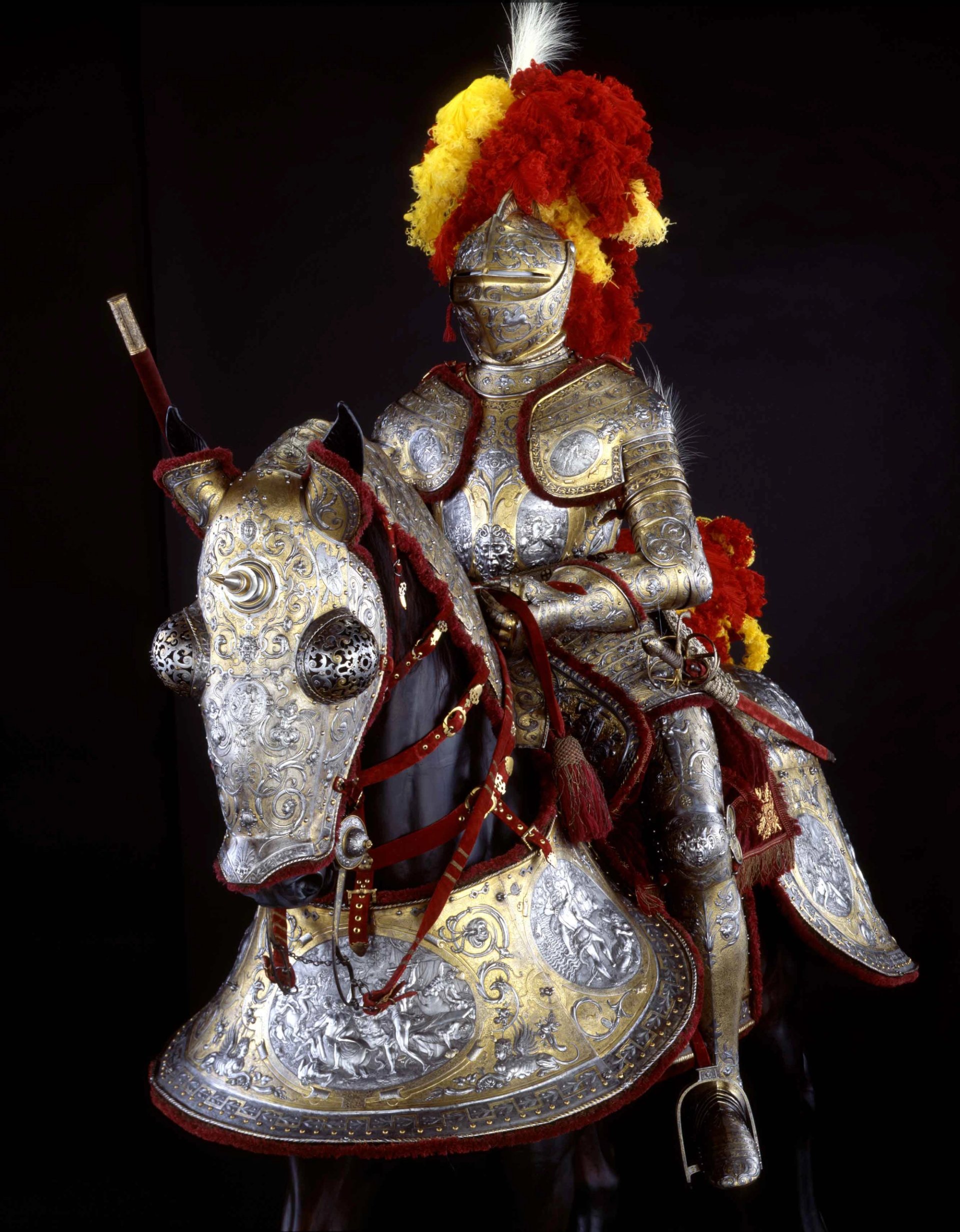
Ceremonial armour for a person and a horse (1563-1565). Made for King Erik XIV of Sweden; bought by Elector Christian II of Saxony in 1606
© Rüstkammer, SKD. Photograph: Jürgen Karpinski
7. Johannes Vermeer’s Lady Studying a Letter at an Open Window (round 1657-59), Gemäldegalerie Alte Meister, Zwinger (Semperbau)
Dresden made art-world headlines in 2021 when the SKD unveiled a painting-within-a-painting on this acquainted Vermeer work. A Cupid determine, sequestered behind the centuries-old floor, was first found again in 1979, apparently adorning a wall behind the mysterious, letter-bearing girl.
It was lengthy thought that Vermeer himself had coated it up after altering his thoughts. Then, throughout a 2017 remedy, conservators realised {that a} later hand—notably not Vermeer’s—had carried out the obscuring, and the SKD determined to revive the luxurious component to what had appeared a decidedly minimalist setting.
Right this moment guests can benefit from the restored work, with Cupid, in an intimate aspect cupboard—alongside different works by Vermeer’s fellow Dutch masters.
Admission €16. Instructions right here
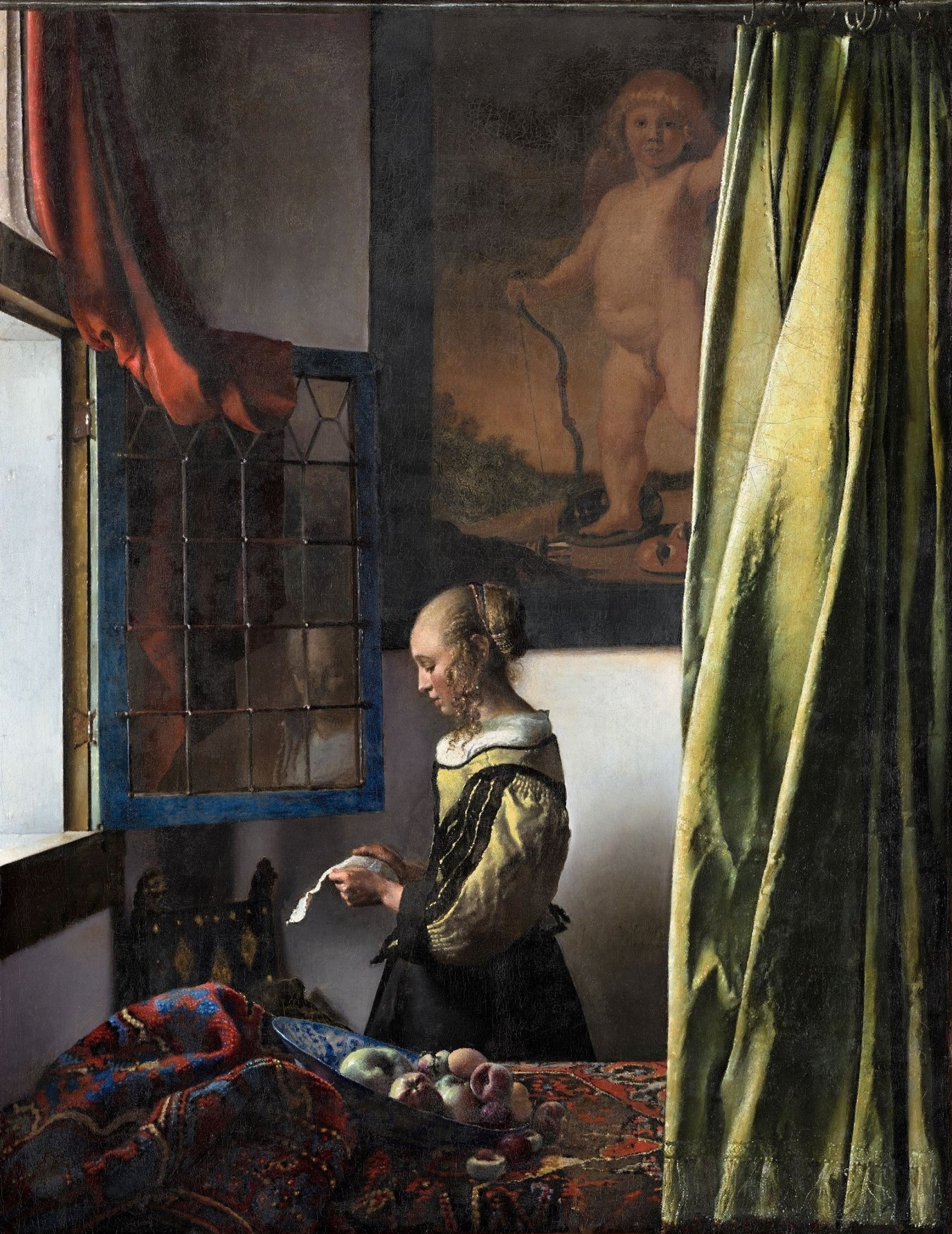
Johannes Vermeer, Lady Studying a Letter at an Open Window (round 1657-59) after its restoration
© Gemäldegalerie Alte Meister, SKD, Photograph: Wolfgang Kreische
8. Lantern (Kangxi interval, early 18th century), Porcelain Assortment, Zwinger Palace
Germans distinguish between people who find themselves merely thinking about porcelain and people who find themselves obsessive about it—victims, in a phrase, of Porzellankranheit, or “porcelain-disease”. Amongst historical past’s bothered was Augustus the Sturdy, who nearly bankrupted his realms in an effort to amass tens of hundreds of items of near-priceless East Asian porcelain.
He later established Europe’s first porcelain manufactory, within the former Saxon capital of Meissen, and the SKD’s Porcelain Assortment is wealthy in these sculptural works. They sit within the firm of Augustus’ earlier purchases, resembling this uncommon, paper-thin Chinese language lantern, whose delicacy Meissen’s masters tried and failed to duplicate.
Admission €16. Instructions right here
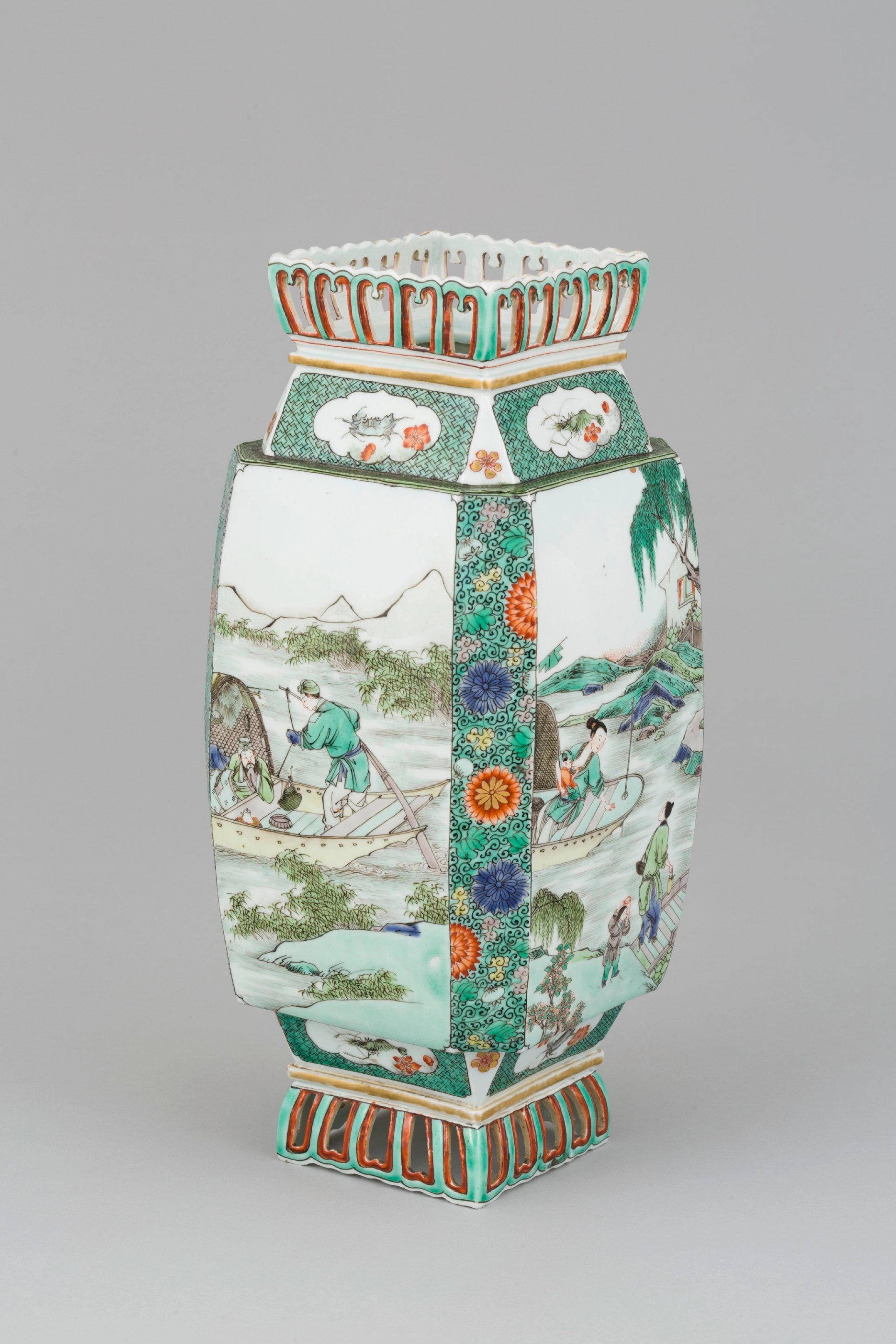
Lantern, Kangxi (early 18th century)
© Porzellansammlung, Staatliche Kunstsammlungen Dresden
9. Gerhard Richter, Secretary (1963), Galerie Neue Meister, Albertinum
Germany’s best-known dwelling painter put down roots in West Germany’s Rhineland however was born in Dresden in 1932. Richter was a product of the town’s communist-era artwork academy, whereas additionally strongly influenced by the Gemäldegalerie’s Previous Masters holdings.
He fled west in 1961, nonetheless his longstanding affection for his hometown’s cultural heritage was reaffirmed in 2006, when he arrange the Gerhard Richter Archive, underneath the auspices of the SKD, within the Albertinum. That constructing’s Galerie Neue Meister is now additionally residence to a noteworthy and complete show of greater than 70 Richter works, together with this early photographic portray, impressed by a lurid tabloid story a couple of secretary, her boss and his spouse, whom the boss murdered. Richter designed the show himself.
Admission €14. Instructions right here
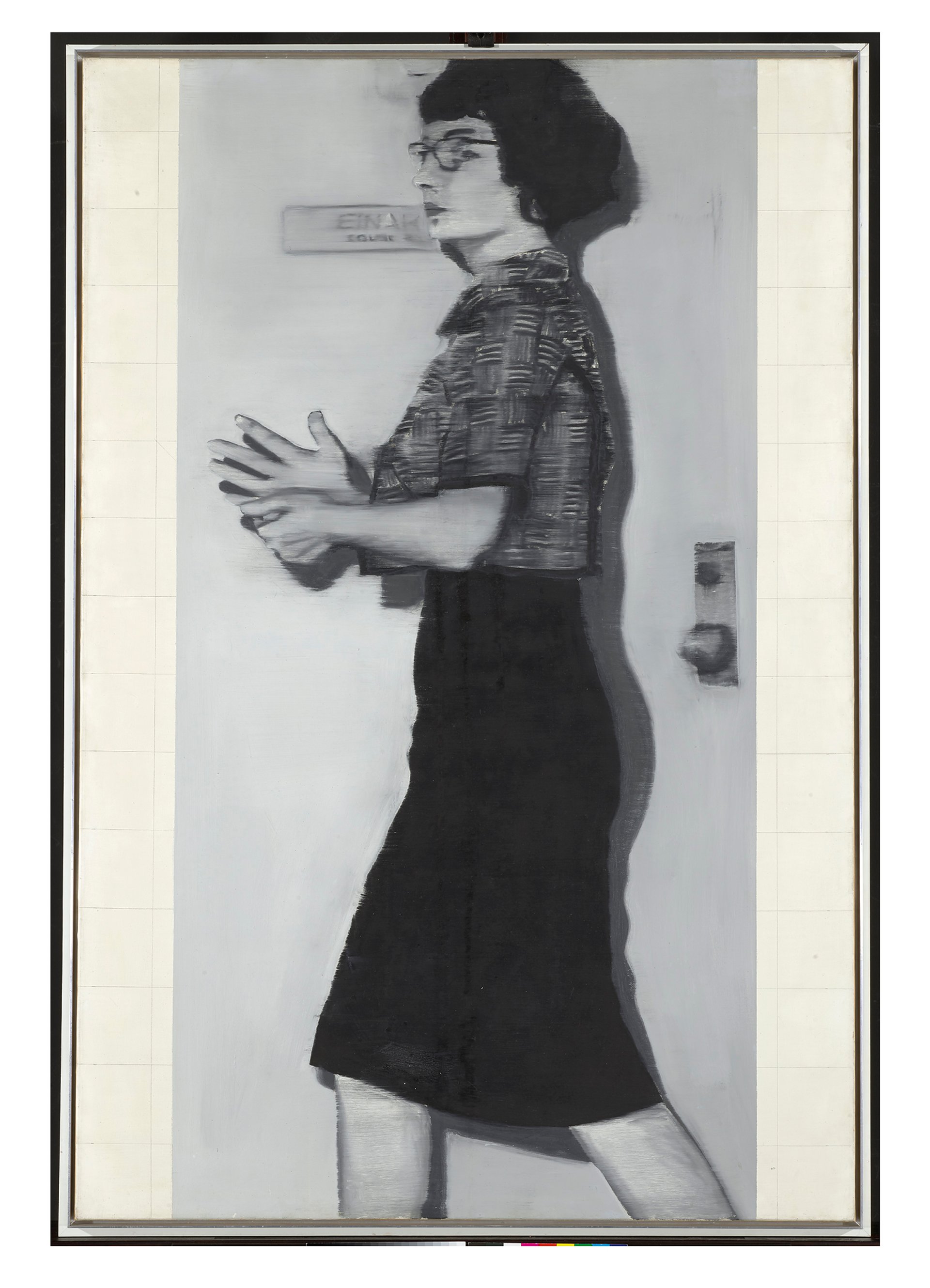
Gerhard Richter, Secretary (1963)
© Gerhard Richter 2025 (02092025). Photograph: Elke Estel und Hans-Peter Klut | Staatliche Kunstsammlungen Dresden
10. Rosalba Carriera’s Self-Portrait as Winter (1730/31), Gemäldegalerie Alte Meister, Zwinger (Semperbau)
In its 18th-century prime, Dresden had an affinity for the Republic of Venice, then in its twilight years. Consequently the Saxon capital’s Previous Masters assortment is a major repository of Venetian pastel portraits by Carriera, who discovered prepared patrons in Europe’s luxury-loving courts.
Educated as a lace maker, earlier than switching to portray snuff containers, Carriera subsequently emerged because the main girl artist of her day, and her regular output helped foster a pattern for pastels, in addition to a grand stylistic shift from the Baroque to the Rococo. This self-portrait, made when she was in her late 50s, is a seasonal allegory. It has much less of the frippery and jauntiness that she was identified for, with intimations of growing old and even demise.
Admission €16. Instructions right here
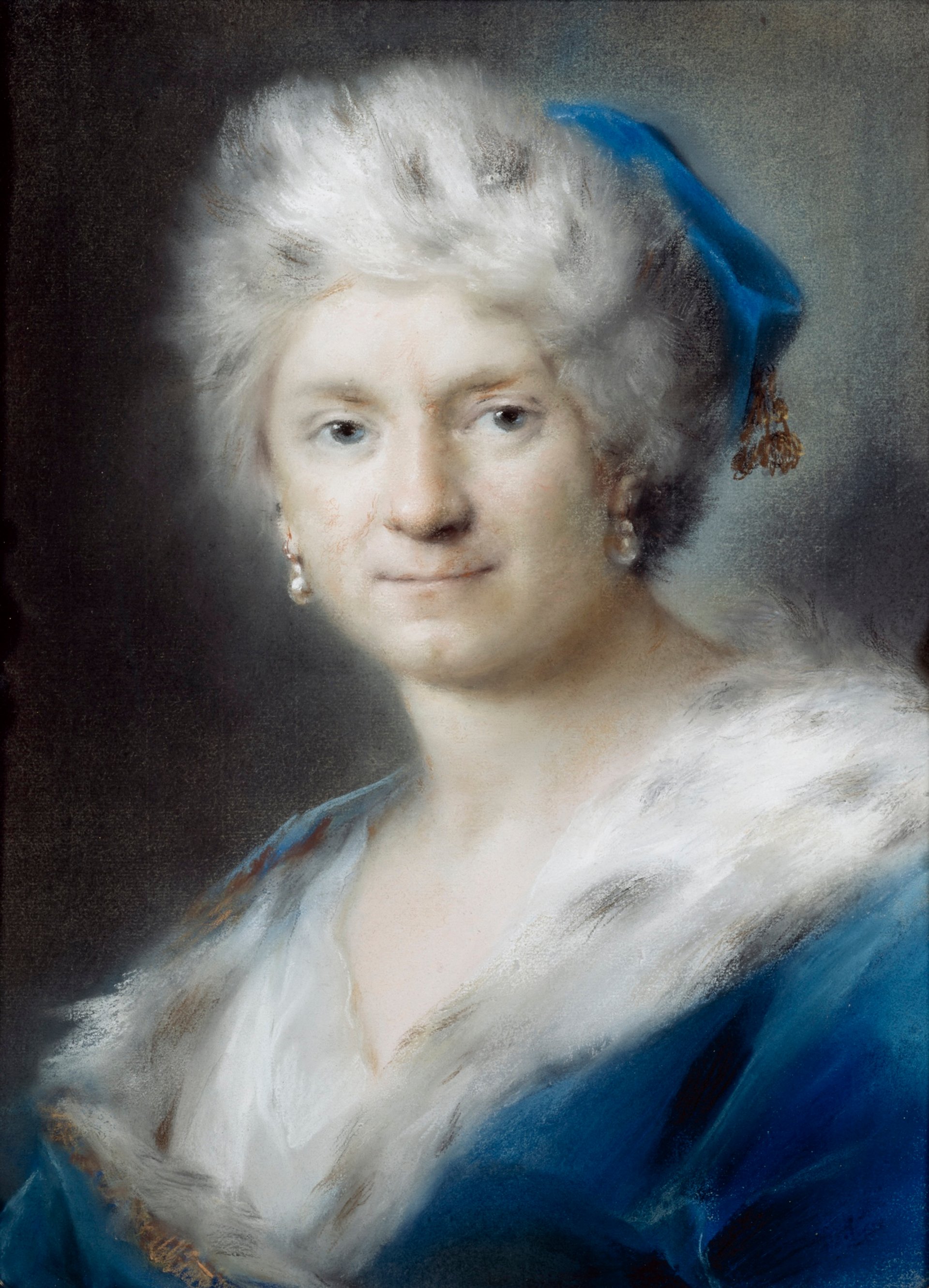
Rosalba Carriere, Self-Portrait as “Winter” (1731)
© Gemäldegalerie Alte Meister, SKD. Photograph: Hans-Peter Klut
